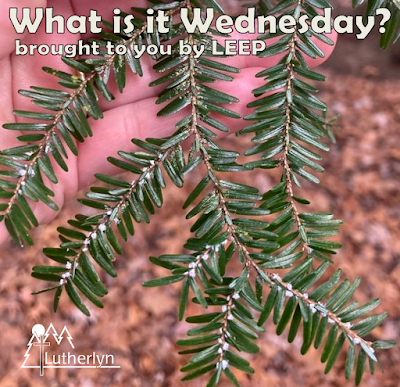Can
you identify what's in this videa?
Each Wednesday morning
on Camp Lutherlyn's Facebook page
the Lutherlyn Environmental
Education Program posts a photo or video.
Readers
have all morning and afternoon
to
make their best guess about what it is.
Around
6 pm LEEP provides the answer and a brief explanation.
Each
week's What is it Wednesday post
will
also be posted on the Nature of Lutherlyn blog,
after it is posted on Facebook,
sometimes
with additional bonus information.
In
addition to bringing you current editions of What is it Wednesday
on the
Nature of Lutherlyn blog,
we
will be reposting old editions,
creating
a What is it Wednesday archive.
This photo was posted as a What is it Wednesday on
December 29, 2021.
And
the answer is....
The typical song of a Carolina wren is different than what
we hear here, and sounds something like “teakettle, teakettle, teakettle.”
However, in addition to songs, birds make shorter bursts of sounds referred to
as calls. The sound the Carolina wren is making in this clip is known as its “cheer
call” because of the sound it makes.
Learning to identify birds by their sounds can be tricky because
sounds are hard to look up, and we often don’t see the bird when we hear its
song or call. But newer bird ID resources like apps and online and digital
guides can help make this easier.
If you do happen to catch a glimpse of the bird making the
sound, maybe you can guess the general category or type of bird you think it is.
In this case, I could guess from the size and shape of the bird that it was a
wren, even though I wasn’t close enough to see what kind of wren. You can then
scroll through that section in an online or digital bird guide and listen to
each bird’s sounds until you find a match. (It helps to check each bird’s range
first to quickly eliminate those that aren’t in your area in the season you
encountered it.) Cornell University’s All About Birds online guide is excellent
and allows you browse by family or shape. Audubon has excellent downloadable digital
guides for tablets or phones and also has a good online guide.
Even if you don’t have any visual clues to help you narrow
down the type of bird you heard, some apps can now search for and identify bird
song. Merlin Bird ID and Bird Genie seem to be the most respected of these,
although we haven’t used them yet at LEEP. These apps allow you to record the
bird directly into the app as you hear it, and the app will match the song to
its bird. It is always helpful to confirm a search like this by searching in
reverse – look up in another resource the bird which the app says is a match,
and see if the sounds listed in its description match what you hear.
Like and follow Camp Lutherlyn on
Facebook, to see What is it Wednesday posts when
they come out and have the opportunity to share your guesses in the comments!











